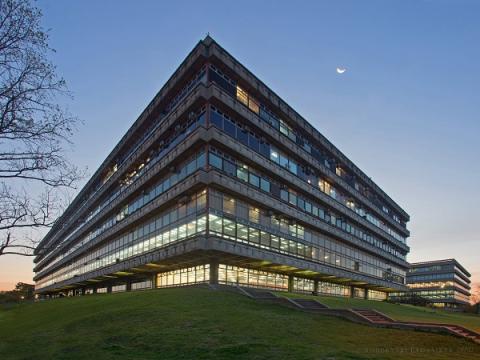University of Buenos Aires - IFIBA - CONICET - UBA
Institute

Departamento de Física
Facultad de Ciencias Exactas y Naturales
Pabellón I
Ciudad Universitaria
1428 Buenos Aires - Argentina
+54 011 4576 3353

Departamento de Física
Facultad de Ciencias Exactas y Naturales
Pabellón I
Ciudad Universitaria
1428 Buenos Aires - Argentina
+54 011 4576 3353
The University of Buenos Aires (UBA) is a public, free university, founded in 1821. It is the largest university in Argentina (350000 students and 29000 staff) and consists of 13 Schools, 6 Hospitals, 10 Museums and is linked to 4 High Schools.
Within UBA, the College of Exact and Natural Sciences hosts the Physics Department, one of the most important Physics Research centers in Argentina with over 90 full time researchers that span a wide spectrum of experimental and theoretical topics among which the Experimental High Energy Physics group (HEP-EX).
Currently, the HEP-EX group at UBA is a member of the ATLAS Collaboration at CERN. We have experience with the understanding of how quarks and gluons evolve in showers of particles that arrive at the detector. These showers are called jets and they are present in most final states observed at ATLAS. The physics activities of this group focus on the precise measurement of Standard Model observables and the search for New Physics in final states including jets.
La Universidad de Buenos Aires (UBA) es una universidad publica y gratuita fundada en 1821. Es la mas grande de Argentina (350000 estudiantes y 29000 empleados) y contiene 13 Facultades, 6 Hospitales, 10 Museos y esta vinculada con 4 Colegios Secundarios.
La Facultad de Ciencias Exactas y Naturales contiene, entre otros, al Departamento de Fisica, uno de los centros de investigacion en Fisica mas importantes del pais con mas de 90 investigadores del CONICET que cubren un vasto espectro de temas de Fisica teorica y experimental, entre ellos el Grupo de Fisica de Altas Energias Experimental (HEP-EX).
Actualmente, este grupo es miembro de la Colaboracion ATLAS en CERN. Tenemos experiencia en el entendimiento del modo en que quarks y gluones evolucionan en lluvias de hadrones que interactuan con los detectores. Estas lluvias, llamadas "jets", estan presentes en casi todos los estados finales que se observan en el experimento ATLAS. Las actividades fisicas de este grupo se centran en la medicion precisa de observables del Modelo Estandar y la busqueda de Nueva Fisica en estados finales que incluyen jets.

